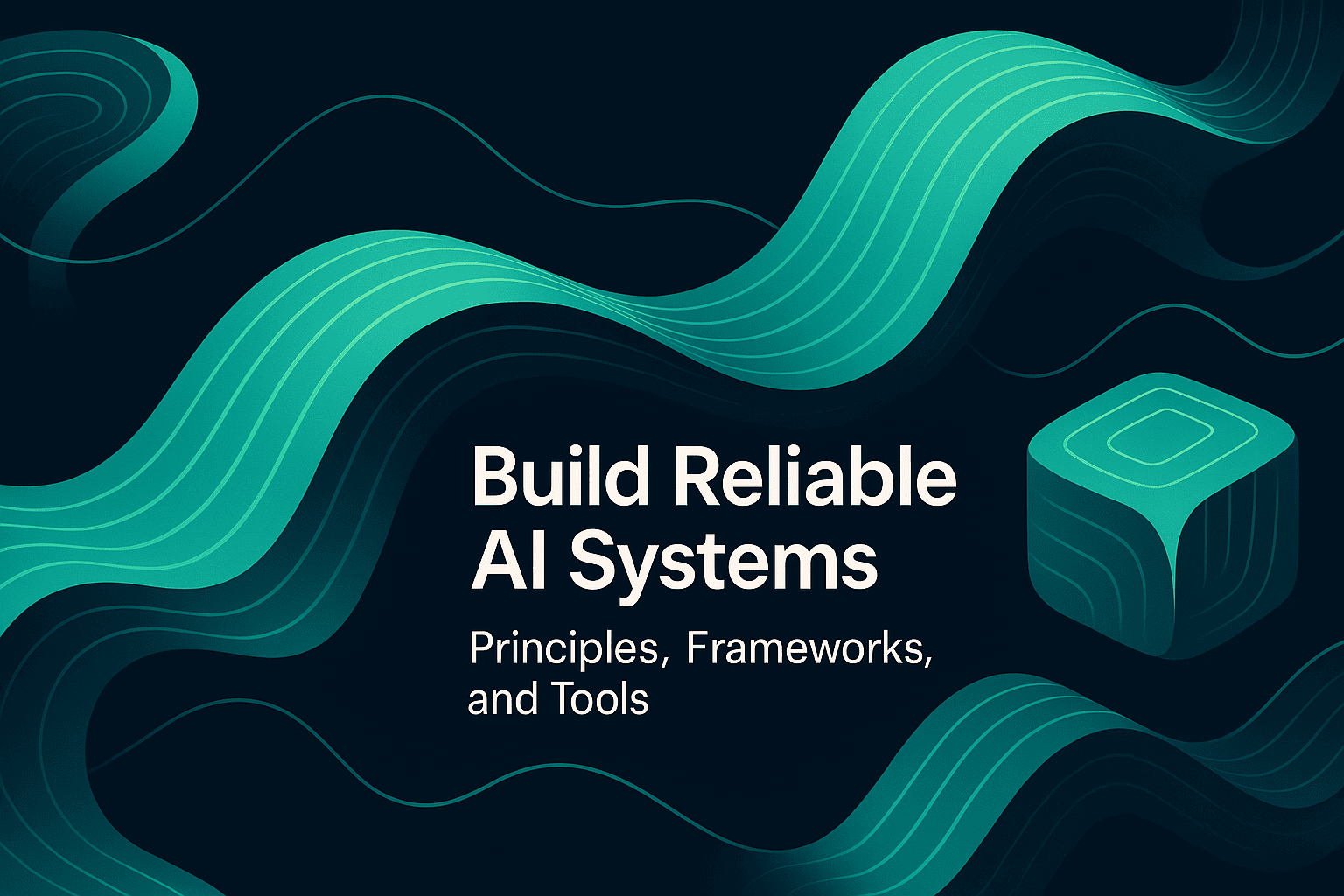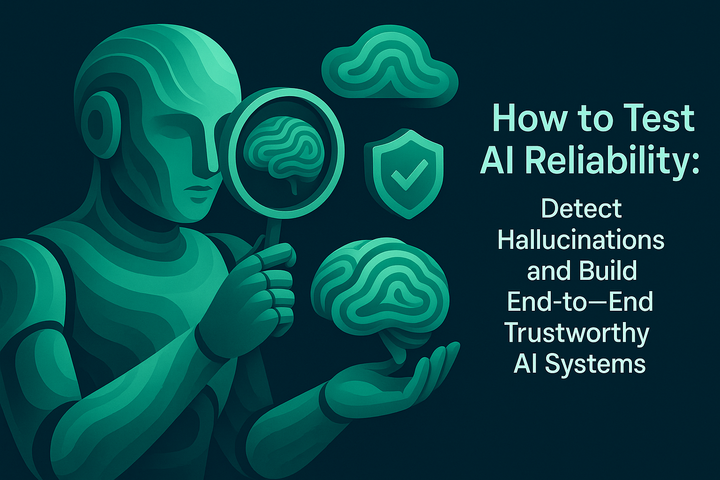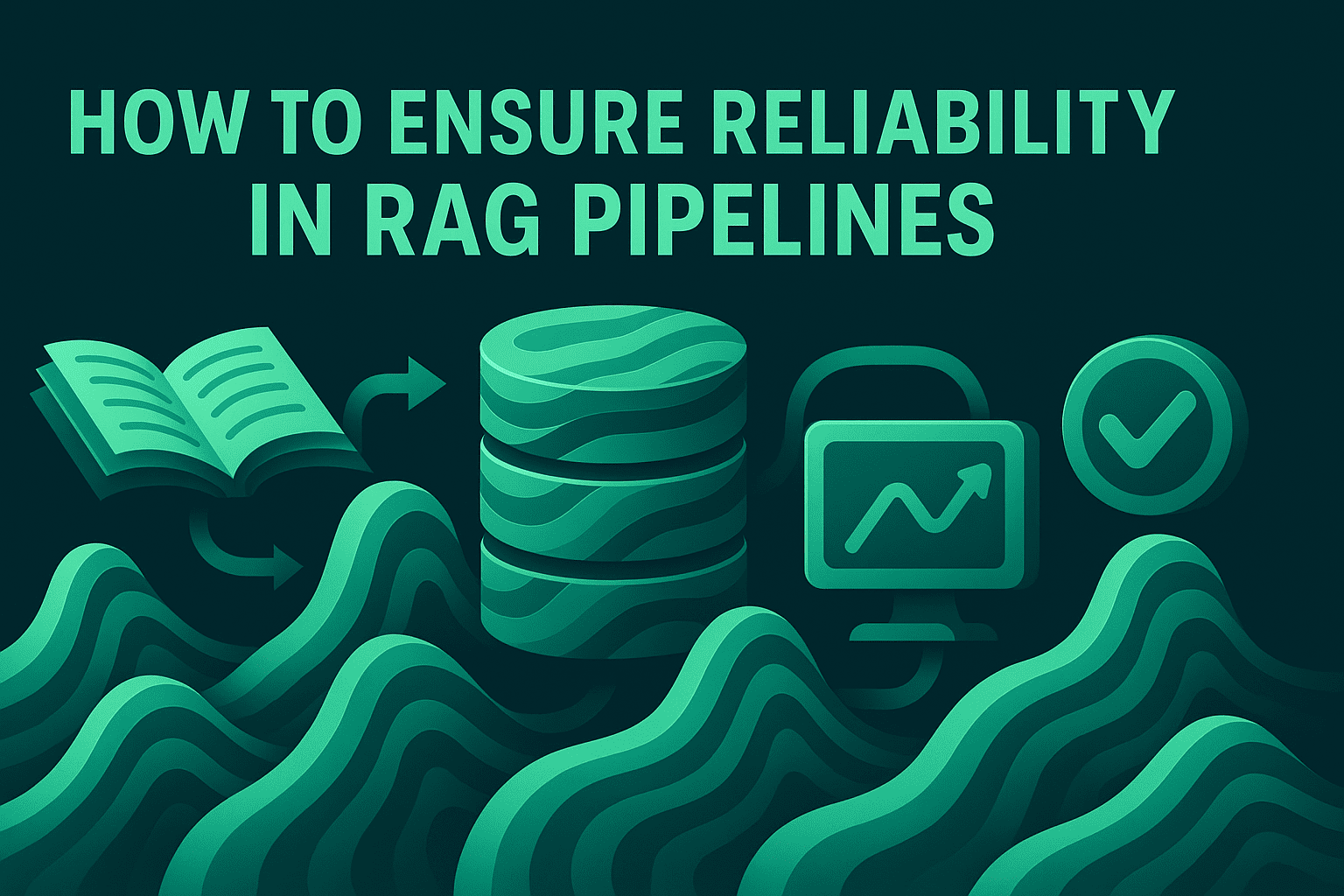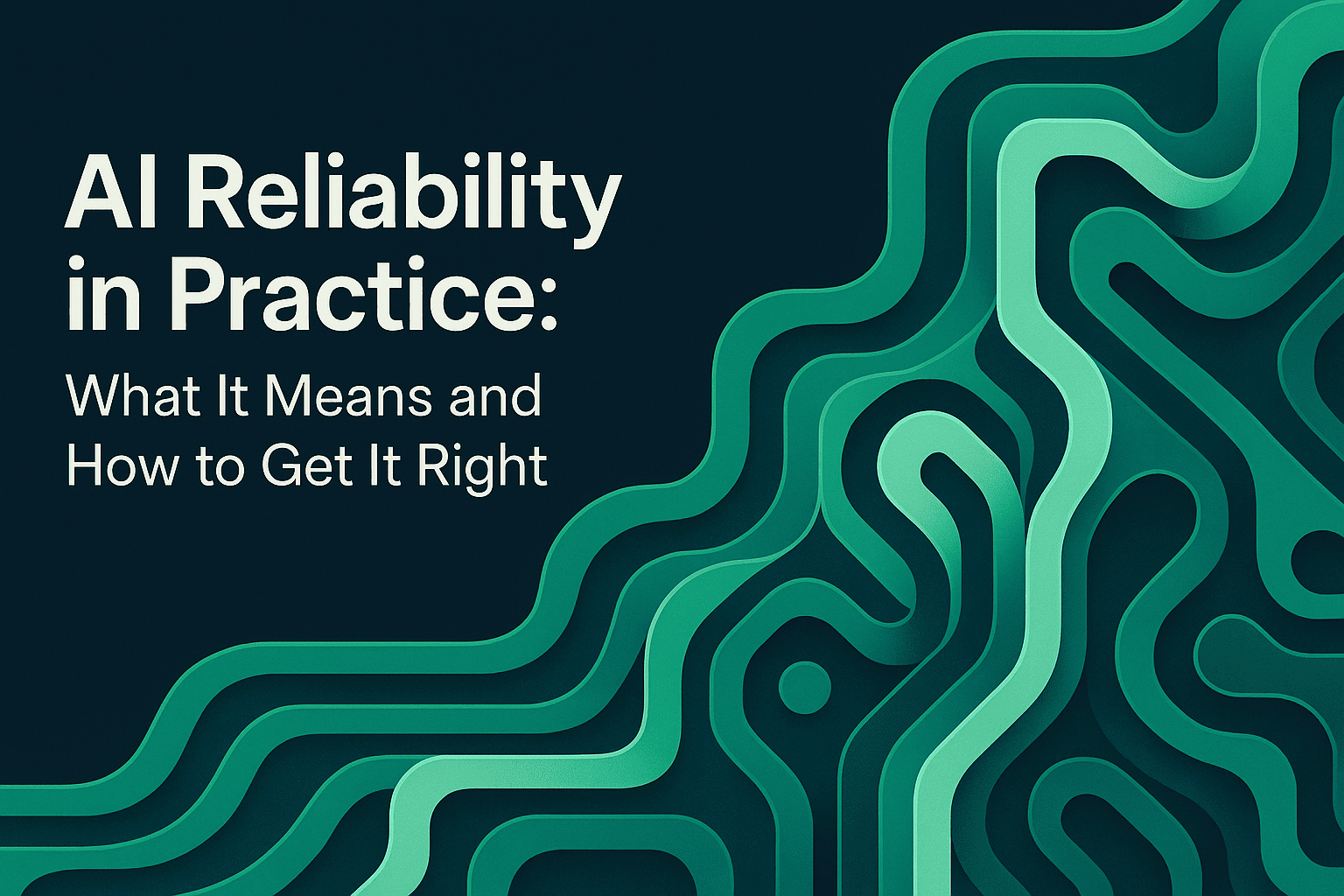Build Reliable AI Systems: Principles, Frameworks, and Tools

TL;DR:
Reliable AI systems demand lifecycle discipline, clear governance, robust data practices, reproducible agent development, continuous evaluation, and strong observability. Use multi-turn simulations, structured test conversations that replicate real user-agent exchanges, to surface failure modes before release, combine automated and human evaluators to quantify quality, and instrument production with distributed tracing, session/span analysis, and alerts on regressions. Maxim AI maps these workflows end-to-end: experimentation and prompt management, agent simulation and evaluations, observability and monitoring, evaluators and data engine, plus a step-by-step implementation plan.
Table of Contents
- How to Build Reliable AI Systems: Principles, Frameworks, and Tools
- Why Reliability Matters
- Core Principles for Trustworthy AI
- An End-to-End Framework: From Strategy to Continuous Monitoring
- Strategy and Design
- Data Management
- Algorithm and Agent Development
- Continuous Evaluation and Observability
- Evaluation: Quantifying Reliability Across the Lifecycle
- Pre-Release Evaluation
- In-Production Evaluation
- Observability: Tracing, Debugging, and Monitoring Agentic Systems
- Tools and Workflows with Maxim AI
- Experimentation and Prompt Management
- Agent Simulation and Pre-Release Evals
- Observability, Tracing, and Monitoring
- Evaluators and Data Engine
- Implementing Reliability Step by Step
- Conclusion
How to Build Reliable AI Systems: Principles, Frameworks, and Tools
Building reliable AI systems requires clear governance, rigorous evaluation, robust observability, and continuous improvement across the AI lifecycle. This guide synthesizes proven principles and implementation frameworks, then maps them to practical tooling that engineering and product teams can deploy today.
Why Reliability Matters
Reliability is the assurance that AI systems consistently deliver accurate, safe, and predictable outcomes across varied inputs and real-world contexts. In production agentic applications, reliability depends on four foundations: well-defined governance, comprehensive evaluation, robust observability, and resilient operations. Focus on measurable quality signals, multi-turn simulations, versioned prompts and agents, continuous in-production evals, and distributed tracing to maintain consistency as models, data, and user behavior evolve.
Core Principles for Trustworthy AI
Reliable AI aligns with industry principles defined by leading standards bodies and practitioners. In practice, teams translate these principles into clear policies, processes, and measurable controls across the AI lifecycle.
- Accountability: Establish documented ownership for model development, deployment, and incident response, ensuring traceability and governance.
- Explainability and Transparency: Maintain clear decision paths and accessible logs so prompts, evaluations, and policies can be reviewed and audited.
- Fairness and Safety: Continuously evaluate for bias, toxicity, and unsafe content using automated and human evaluators, both before release and in production.
- Reliability and Robustness: Measure correctness, resilience under data or context shifts, and behavioral consistency across versions using structured evaluation frameworks.
- Privacy and Security: Implement data minimization, access controls, and privacy-preserving techniques to protect sensitive information.
Together, these principles create the foundation for trustworthy, reliable AI systems, where performance and safety can be verified, monitored, and improved over time.
An End-to-End Framework: From Strategy to Continuous Monitoring
Use a four-phase framework to structure the delivery and operation of reliable AI systems.
1. Strategy and Design
- Define use cases, risk categories, and acceptable failure modes.
- Establish governance for change management, rollout, and incident handling.
- Set reliability targets with clear metrics, including accuracy, policy compliance, latency, and cost budgets.
2. Data Management
- Curate representative datasets covering diverse personas, edge cases, and realistic usage scenarios.
- Track data provenance and splits for auditability and reproducibility.
- Implement privacy controls and data minimization aligned to your domain’s constraints..
3. Algorithm and Agent Development
- Version prompts, policies, and agent workflows; ensure reproducibility across models and providers.
- Validate behavior under multi-turn, tool-use, and retrieval conditions.
- Guard against known risks such as model drift, incomplete retrievals, or prompt instability using layered evaluation and testing controls.
4. Continuous Evaluation and Observability
- Run automated and human-in-the-loop evaluations both pre-release and in production.
- Monitor quality, latency, cost, and drift with distributed tracing and session-level analytics.
- Alert on regressions, coordinate rollback procedures, and conduct post-incident reviews with root-cause analysis.
For a comprehensive overview of evaluation modalities and how LLM-as-a-judge fits into a reliable program, read Maxim’s article on evaluator design and operational use in agentic systems: LLM-as-a-Judge in Agentic Applications.
Evaluation: Quantifying Reliability Across the Lifecycle
Evaluation is the backbone of reliability. Robust programs combine statistical checks, rule-based validations, LLM-as-a-judge metrics, and targeted human reviews.
Pre-Release Evaluation
- Scenario coverage: Multi-turn simulations across personas, contexts, and tools to surface failure modes early, mirroring real conversational workflows.
- Objective metrics: Policy compliance, factuality, task completion, and clarity scored at conversation, trace, and span levels.
- Comparative testing: A/B prompt variants, model choices, and tool chains validated across large test suites with version tracking.
In-Production Evaluation
- Continuous scoring: Periodic batch evals or streaming evals on live logs for policy adherence and correctness.
- Drift detection: Track changes in quality as models, prompts, or upstream data sources evolve.
- Human-in-the-loop: Queue targeted items for expert review when automated signals indicate ambiguity or risk.
Maxim AI’s evaluation guidance on LLM-as-a-judge discusses evaluator design, cost and latency trade-offs, and guardrails for reliable deployment in production settings: LLM-as-a-Judge in Agentic Applications.
Observability: Tracing, Debugging, and Monitoring Agentic Systems
Observability provides the visibility and context required to understand, debug, and continuously improve AI agent performance. It connects system behavior with content-level signals, helping teams measure quality, identify regressions, and optimize reliability in production.
- Distributed Tracing: Capture and visualize agent workflows end-to-end across LLM calls, retrievals, and tool invocations. Tracing enables teams to analyze timing, context reconstruction, and decision nodes to pinpoint performance bottlenecks or logic errors.
- Session and Span Analysis: Drill down into message flows, state transitions, and evaluator outcomes at fine granularity to uncover the exact conditions that led to a quality drop or failure.
- Quality Monitoring: Track evaluator metrics and quality scores in production, detect regressions automatically, and route flagged sessions into debugging or retraining workflows.
Effective observability transforms agent operations from opaque to measurable, enabling faster root-cause analysis, proactive optimization, and sustained reliability at scale.
Tools and Workflows with Maxim AI
Maxim AI is an end-to-end platform for AI simulation, evaluation, and observability that helps engineering and product teams ship reliable agents faster with measurable quality improvements. The sections below map core reliability workflows to specific capabilities in Maxim’s docs and product pages.
Experimentation and Prompt Management
Use Maxim’s Playground++ and prompt versioning to iterate quickly and track reliability impacts across models and parameters. Compare output quality, latency, and cost to inform deployment decisions.
- Advanced prompt engineering for rapid iteration and deployment: Maxim Docs
- Organize and version prompts, connect to RAG pipelines, and compare outcomes across providers in one place: Maxim Docs
Agent Simulation and Pre-Release Evals
Run multi-turn simulations at scale to evaluate agent behavior across diverse scenarios, personas, and tools. Measure task completion, policy compliance, and trajectory quality. Re-run from any step to reproduce and debug failures.
- Agent simulation and evaluation workflows: Maxim Docs
- Human + LLM-in-the-loop evals for nuanced quality assessment: LLM-as-a-Judge in Agentic Applications
Observability, Tracing, and Monitoring
Observability turns production AI from a black box into a measurable, explainable system. Instrument your applications to capture traces, logs, and evaluator outputs in real time, giving teams full visibility into how agents reason, retrieve, and respond.
Use granular session, trace, and span analytics to pinpoint where performance diverges or context breaks. Set alerts on evaluator scores, latency budgets, and cost spikes so issues are caught before they reach users.
Curate production traces into evaluation datasets to close the loop between monitoring and improvement, ensuring every fix strengthens future reliability.
Explore detailed implementation patterns in Maxim Docs and review security guidance for protecting agents from prompt injection and jailbreak risks.
Evaluators and Data Engine
Use off-the-shelf evaluators or design custom evaluators for accuracy, safety, and compliance. Configure evals at session, trace, or span granularity. Enrich datasets with production logs, feedback, and annotation pipelines for continuous improvement.
- Unified evaluation workflows and human eval integration: LLM-as-a-Judge in Agentic Applications
- Data curation and feedback workflows in the platform: Maxim Docs
Implementing Reliability Step by Step
Follow this sequence to operationalize reliability across your stack.
- Define reliability objectives and metrics per use case: task success, factuality, policy compliance, latency, and cost.
- Instrument experimentation: version prompts, compare across providers, and track eval scores as first-class deployment signals using Maxim Docs.
- Build simulation suites: personas, adversarial inputs, and tool-use paths. Identify and fix failure modes pre-release with multi-turn agent simulations documented in Maxim Docs.
- Operationalize evaluators: combine rule-based, statistical, and LLM-as-a-judge metrics with targeted human reviews. Use design patterns described in LLM-as-a-Judge in Agentic Applications.
- Deploy observability: distributed tracing, quality dashboards, and alerts to capture regressions and incidents early, guided by Maxim Docs.
- Close the loop: curate production data into datasets, retrain or refine prompts and policies, and revalidate with simulation and evaluation before rollout.
Practical Outcomes
Teams across industries are already using Maxim AI’s evaluation and observability stack to ship more reliable agents, faster. By combining multi-turn simulations, LLM-as-a-judge evaluations, and granular production tracing, organizations have cut debugging time, improved task success rates, and scaled quality programs efficiently.
In customer support, Atomicwork used Maxim to streamline evaluation workflows and resolve issues in production AI assistants faster.
In enterprise learning, Mindtickle built an evaluator pipeline to measure accuracy and relevance across training scenarios.
In banking, Clinc achieved higher reliability and compliance through pre-release simulations and post-deployment tracing.
These examples show how Maxim’s unified reliability framework transforms evaluation from a one-time QA task into a continuous performance improvement cycle.
Conclusion
Reliable AI systems result from disciplined governance, rigorous evaluation, strong observability, and resilient operations. Teams should adopt lifecycle practices that measure and improve AI quality continuously, defend against adversarial inputs, and provide transparent, traceable behavior for audits and incident response. Maxim AI’s platform brings experimentation, simulation, evaluation, and observability into one integrated workflow so engineering and product teams can ship trustworthy agents faster and with confidence.
Start building reliable AI systems with Maxim AI. Book a demo at https://getmaxim.ai/demo or sign up at https://app.getmaxim.ai/sign-up.


